House for the Inhabitant Who Refused to Participate
Curated by Charlap Hyman & Herrero
525 West 21st Street
New York, New York 10011
Open through January 21
Between 1974 and 1979, the architect and theorist John Hejduk—one of the famed New York Five who made modernism postmodern—made presentation drawings for what he called The House for the Inhabitant Who Refused to Participate. The residence was to be a tower of a dozen suspended units from a wall. Each would contain a device for living: Unit 1 held a kitchen sink, unit 2 a kitchen stove, unit 5 a bed, and unit 12 a toilet. (Unit 7 was empty or, perhaps given the number’s theological resonance, full of grace.) The inhabitant would have a one-way mirror in which to view themselves; a ladder would allow a visitor to view them through the mirror, too; and an overhead door allows a third participant to seal them both in the tower forever.
At some point, the story goes, a contessa built a version of this tower on an island near Venice without Hejduk’s participation. In the summer of 2020, a dozen architects occupied the home, which was falling apart and, given its location, slated to be razed and transformed into a glamping hideaway. This in turn became Rituals of Solitude, an exhibition at the Venice Architecture Biennale that same year. Hejduk had previously commented that his architecture had moved from an “Architecture of Optimism” to an “Architecture of Pessimism.” Perhaps he meant that modernism’s jet-set futurity had flattened into sad spectacle, which certainly seems to be the case these days.
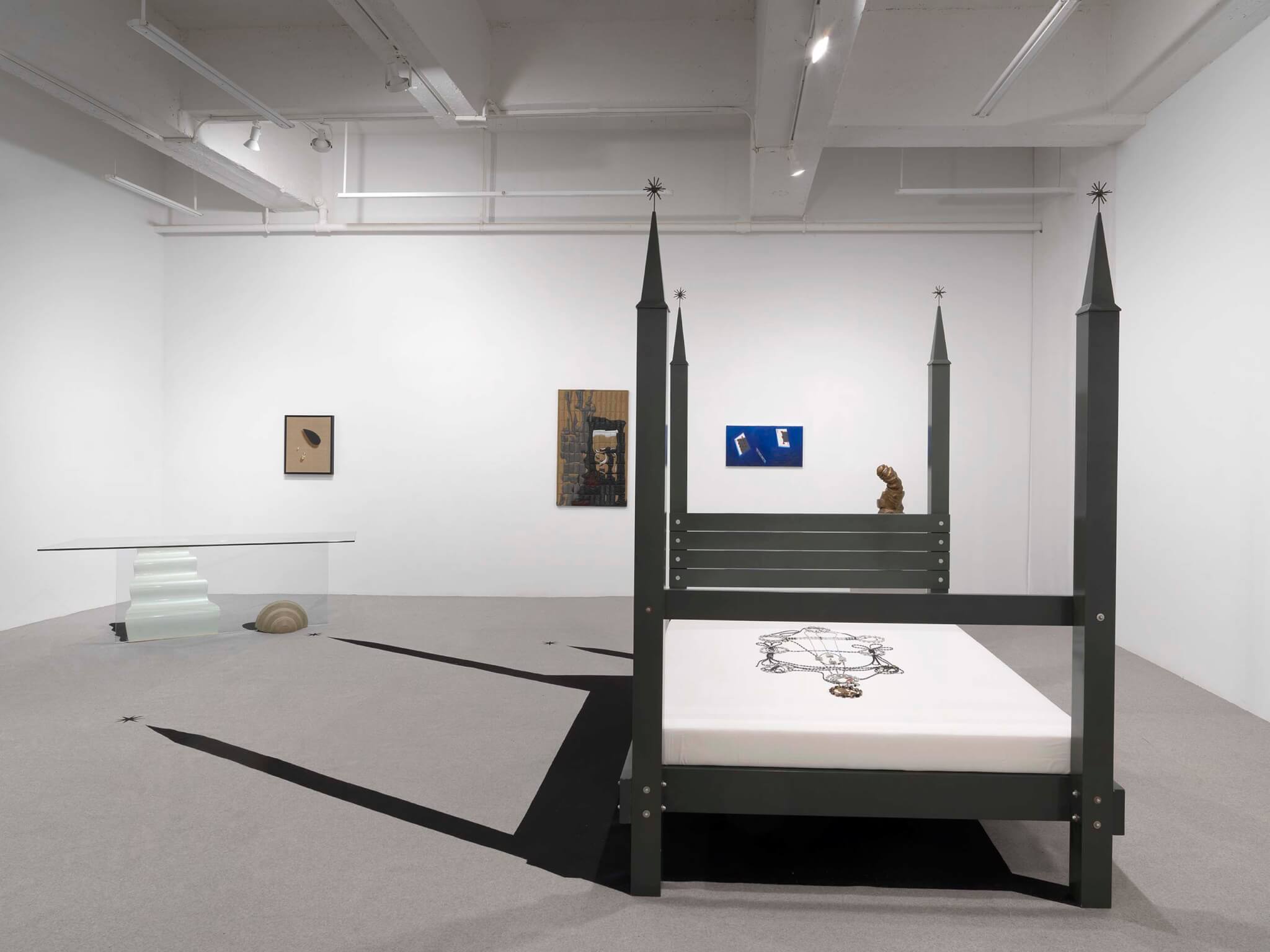
It’s a thrill, then, to see this lineage of ideas embraced positively, without cynicism. This is the case at a current exhibition at Chelsea’s Tina Kim Gallery curated by Charlap Hyman Herrero (CHH). Adam Charlap Hyman and Andre Herrero are skilled rethinkers of postmodernism’s legacy, as their fascination with décor is anchored by historical research and intellectual rigor. Following their 2021 design of a maze of arched spaces for paintings by Davide Balliano, their latest curatorial venture takes its name from Hejduk’s project. In essence, it stages a set of like-minded pieces around one of his domestic provocations. The show is about the frozen time of a single instance—an isolation comprised of watching each other watch ourselves. If curation is sometimes a matter of time travel, here CHH works to cease time entirely.

And they literally do. Sophie Stone’s silk-and-wood-bead Ribbon Mat (with red curls) (2022) hangs in the upper right corner of the gallery, just below the ceiling. “We imagined it was the sun,” Charlap Hyman told AN. During installation, CHH’s Associate Interior Design Director Chelsey Mitchell climbed a ladder and held a spotlight in its place; Charlap Hyman then traced by hand the shadows cast by the various furniture, sculptures, paintings, and other artworks into gray felt covering the gallery floor. He sliced out the shadows in black felt and set them into the gray. The objects now cast this particular shade forever, as if enjoying an eternal golden hour—or, for the pessimists, a sunset without end.
CHH included work that can withstand a little high-concept heavy-handedness. In a far corner, the glass base of James Hong’s Tropic of Cancer dining table (1981) spans between a lacquered wood shell and an undulating set of concrete steps; black felt pools from each of them, and not from the hovering glass top. (It perhaps harkens back to Hejduk’s one-way mirror.) Charlap Hyman said they hoped the shadows’ “stillness would become radiant.” This happens in the Mathieu Matégot’s Le soleil de Tijuana (c. 1960), a drug rug that threads hallucinatory levels of color and form into an Aubusson tapestry. It presses against the white gallery wall like a thumb against the back of an eyelid.
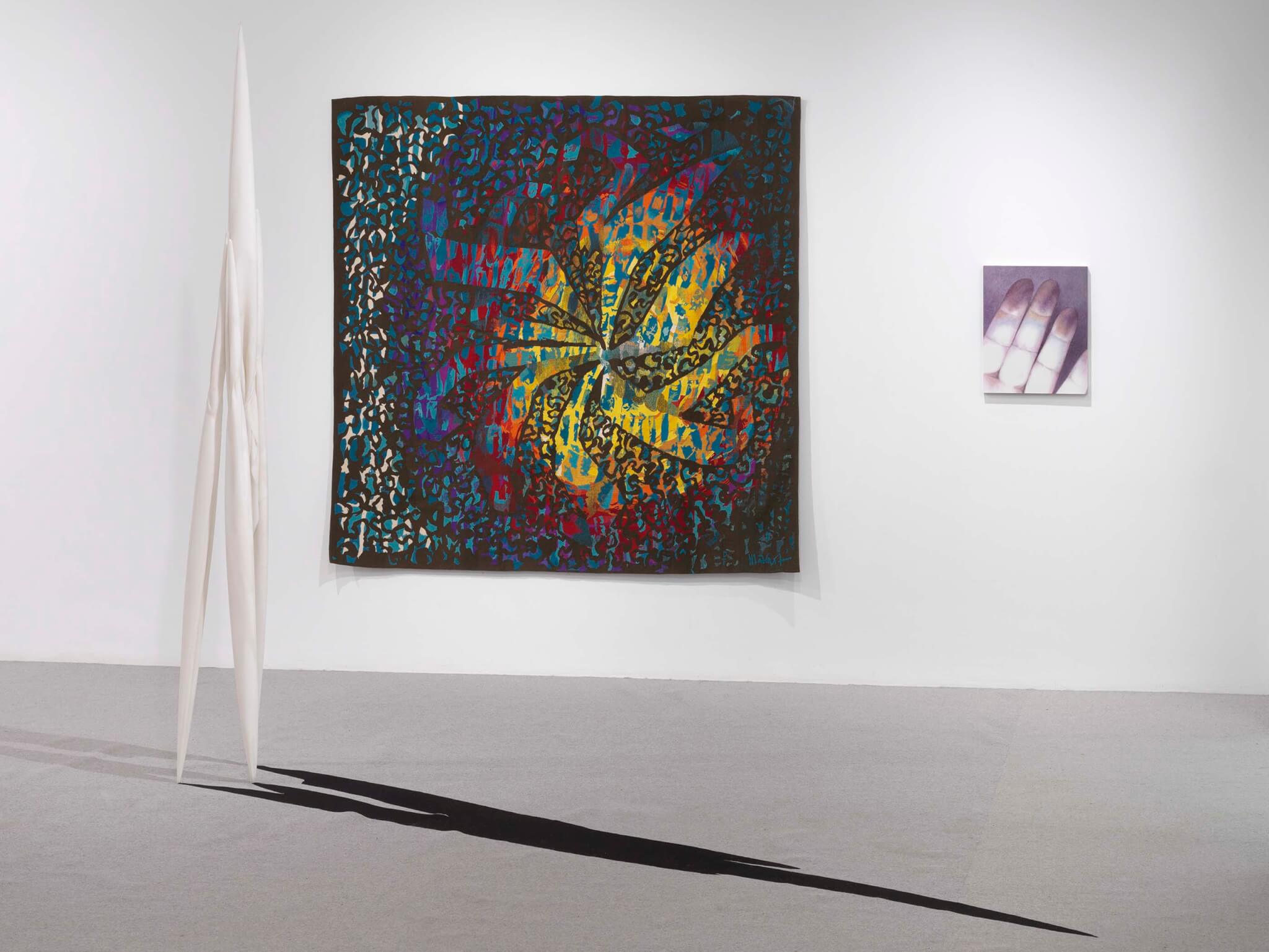
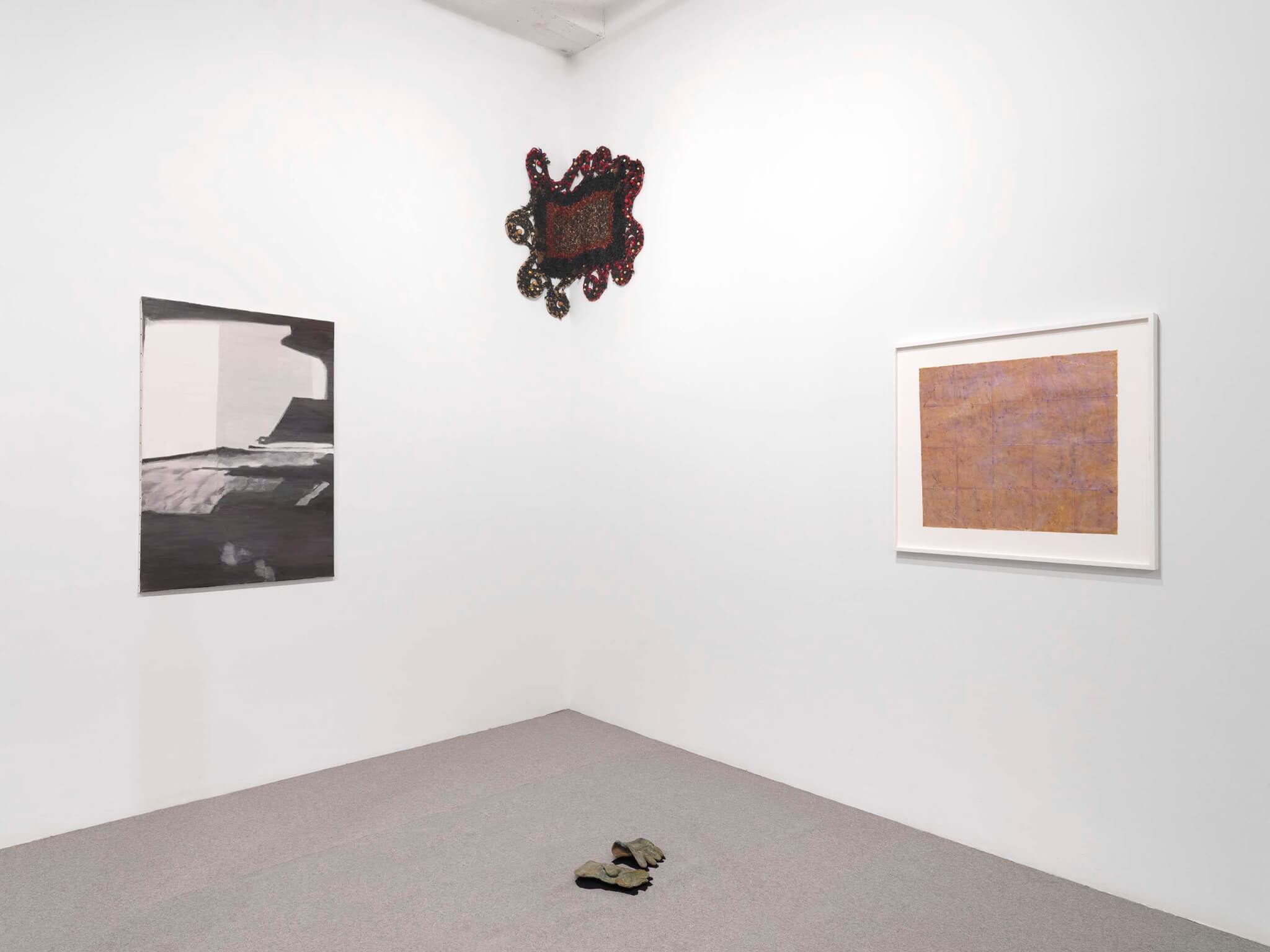
Another pair of works seem to capture moments of spatial shift; installed on opposite walls, they also embody a mind/body split. Anne Libby’s Split Tint (2022) is a grid of satin and batting that imagines a curtain wall out of the materials that might make a curtain itself. It’s a brain tickler of bravura, a defamiliarization of the reflections of a generic glass facade, as if the Seagram Building, flapping in the wind, began to crinkle. Across the room, Heidi Bucher’s astonishing latex-and-mother-of-pearl BORG (Wandstück)/BORG (Wallpiece) (1975–7) is an artifact from the artist’s practice of casting rooms in rubber, decades before Rachel Whiteread or Do Ho Suh. “She skins buildings,” Charlap Hyman observed.
Two artists toy with escape. Across Ficus Interfaith’s Rockaway Door (2018), mosaics of metal and popcorn form an impressionist surround. “It’s a portal that is a river,” Charlap Hyman ventured. It’s also a warning: CHH here—and only here—allowed the felt to rise onto the wall, so a glance through the “door” catches the floor extending in perspective. Plopped in the entry vestibule, Sam Chermayeff’s Juicer Set (2022) is a household blender set in a metal tube and unfinished log that’s both a cutting board and an umbrella stand. (The set-up was used to make margaritas during the show’s opening.) Chermayeff has “broken free of the tyranny of kitchen appliances,” Charlap Hyman explained, and now uses “the whole kitchen as a medium of expression.”
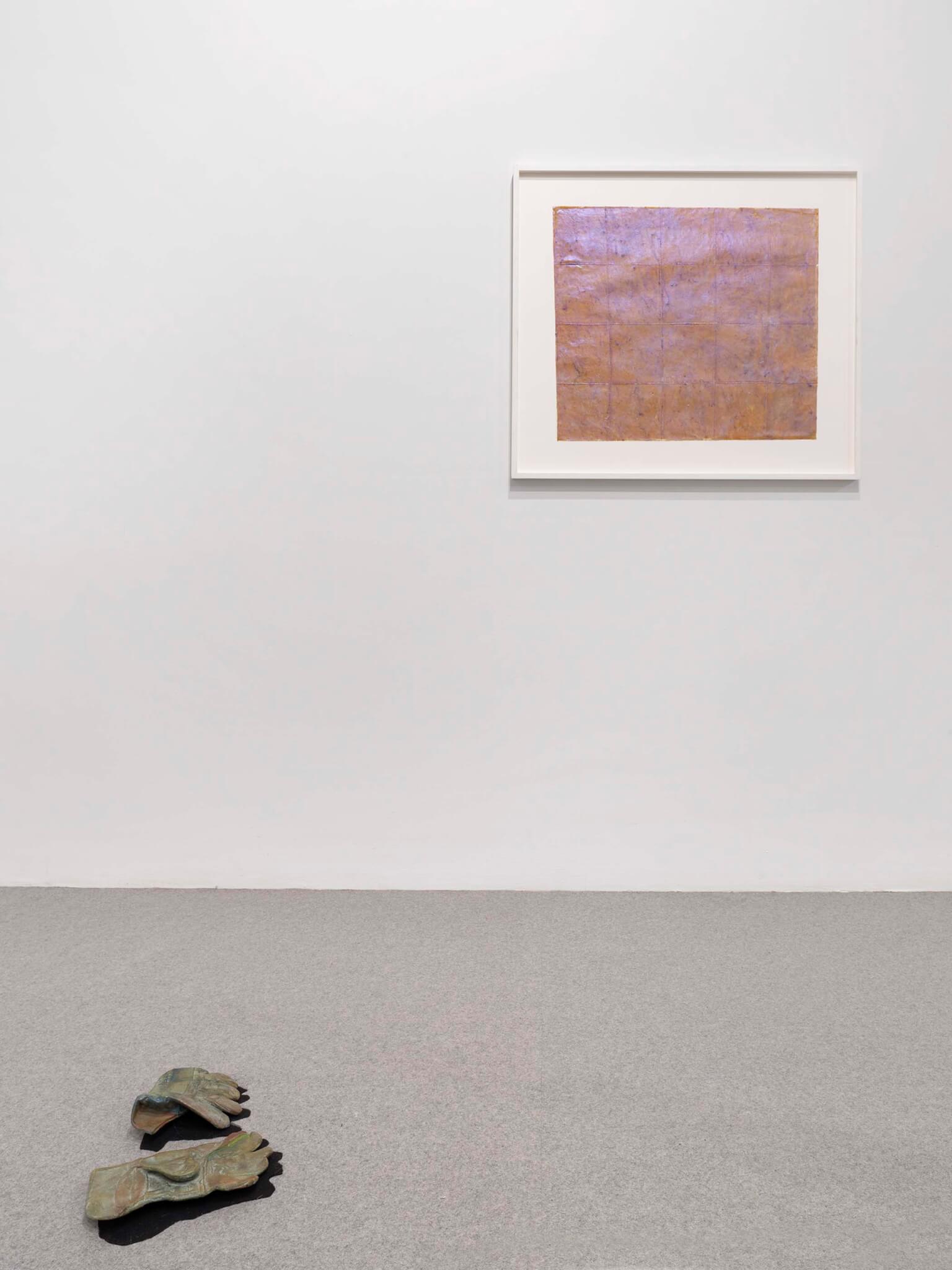
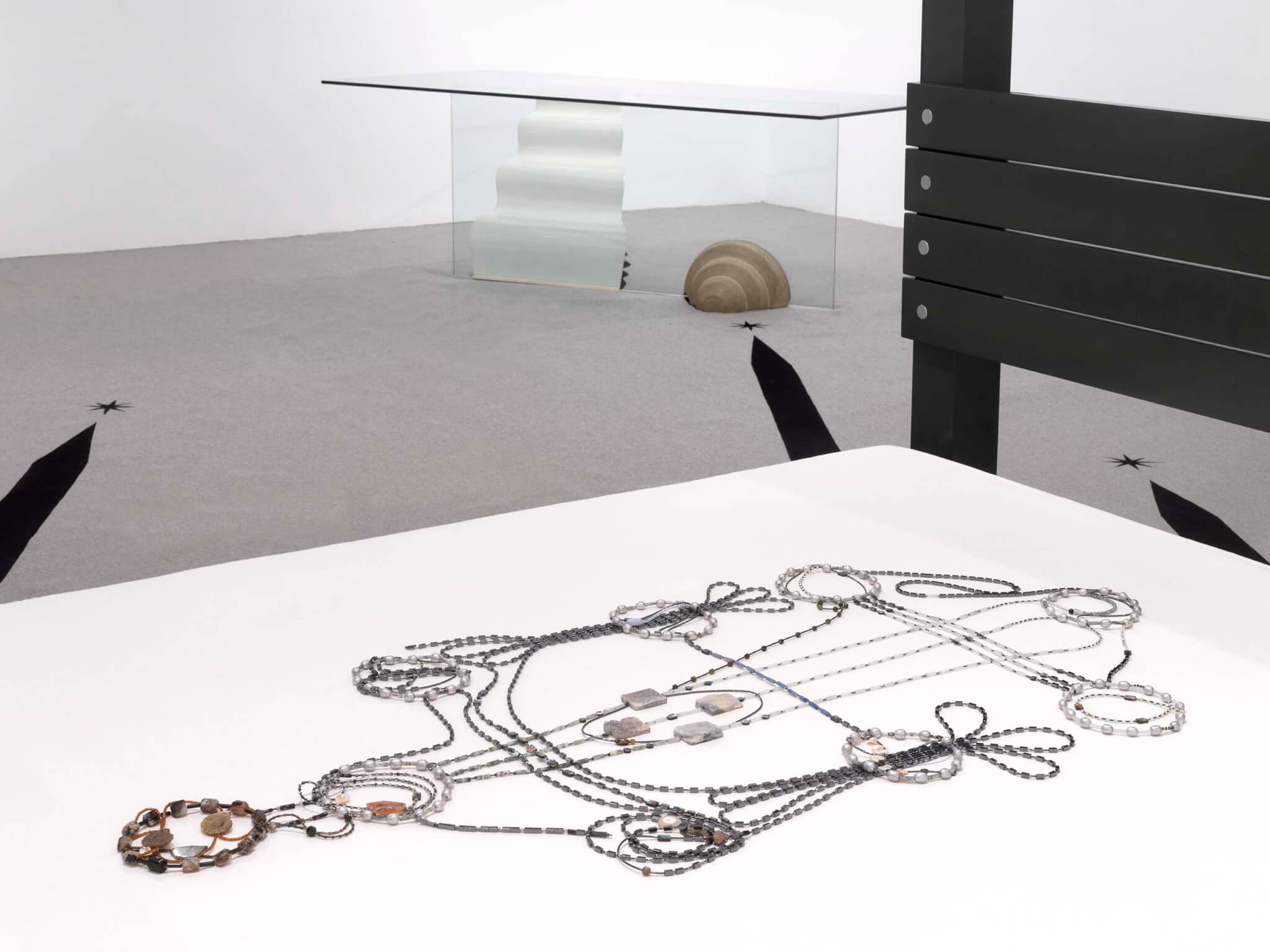
The most striking piece sits in the center of this arrangement, and here is where the show hits home. CHH displays Hejduk’s own “Cilia” double bed (1987), plucked from First Dibs. With its metal-and-wood frame sprouting a quartet of star-topped towers, it’s a mix of medieval pageantry and Rossi-like playfulness. Across its sheets, CHH draped Stephanie Shiu’s Pax Dei (Coverlet) (2022); the net of precious stones is designed to heal the seven chakras, anticipating a salutary effect on the body. Hejduk’s bed, as an architectural allegory, captures sex and dreaming and rest within its four-cornered fort. Only CHH’s shadows escape, and not a moment too soon.
Jesse Dorris is a writer in New York City and hosts Polyglot, a radio show on WFMU.











